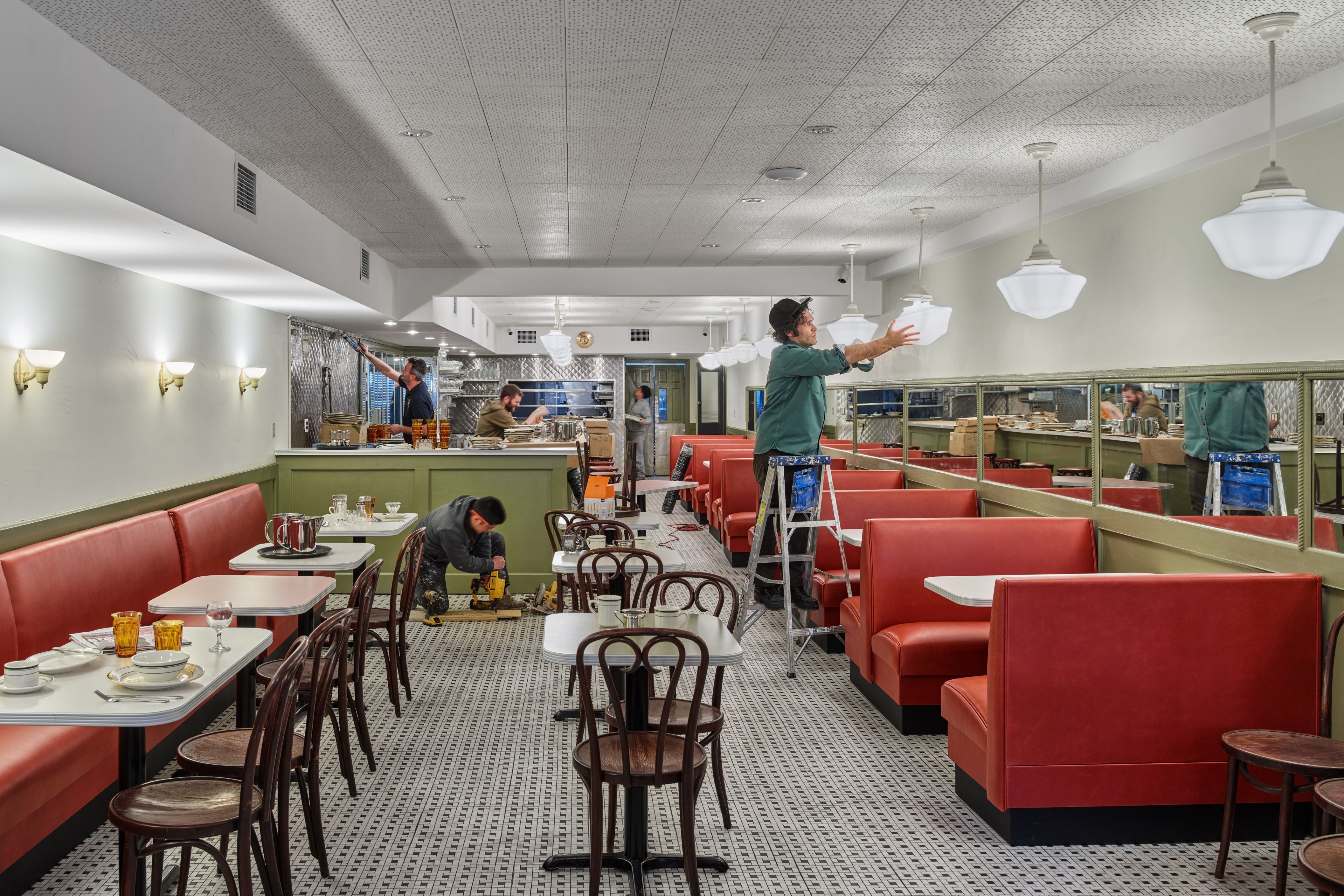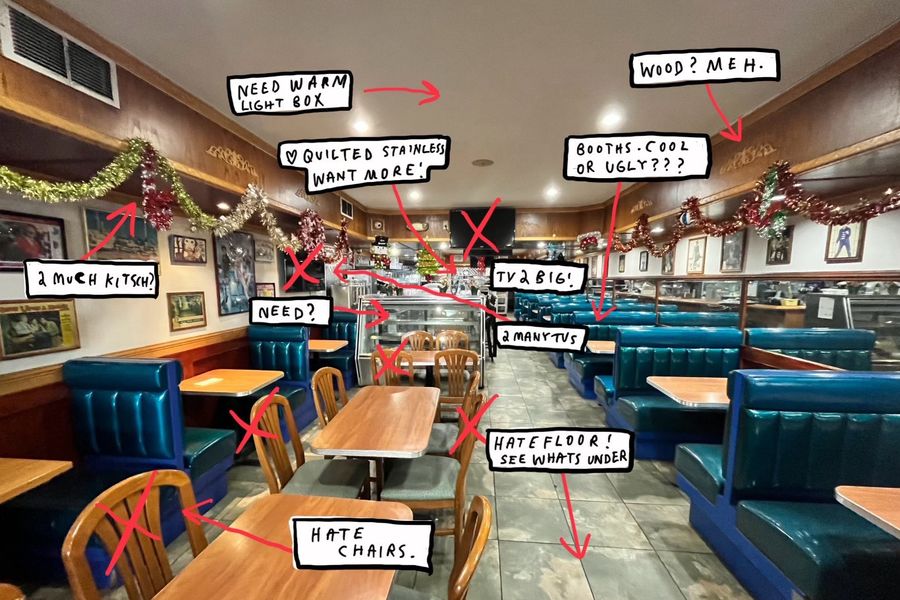when you want, where you want.
A Diner Designed by Movie People
 Montague Diner will open in Brooklyn Heights this month.Photo: Christopher Payne
Montague Diner will open in Brooklyn Heights this month.Photo: Christopher PayneIn August, the producer Gabriel Nussbaum was walking by the former Happy Days Diner, a 24/7 Brooklyn Heights stalwart that had served neighbors for two decades before it closed in 2022. A broker had just put his card in the window. “Should I open a diner?” Nussbaum texted his wife, director Elizabeth Wood. She responded instantly: “I dare you.”
When it debuts this month, the restaurant — now named Montague Diner — will join a growing number of new-old lunch counters and coffee shops to open across the city (including S&P, Greenpoint’s Three Decker Diner, and Kellogg’s in Williamsburg), and it will be the most fastidiously refurbished. But how to open a diner that feels both modern and timeless while avoiding the kitsch of a Johnny Rockets? To realize this very specific vision, Nussbaum got to work with his partners — including directors Ariel Schulman and Henry Joost (Catfish), production designer Sam Lisenco (Uncut Gems, The Bear), attorney Ben Gross, and contractor Kastriot Blakaj.
The first step: Avoid the clichés, especially the chromed-out look that defines so many retro diners, “the trappings of fetishized Americana,” as Lisenco calls them. Instead, they wanted to pull inspiration from the look and feel of Great Depression coffee shops and restaurants. To design the space, Lisenco brought on set decorator Henriette Vittadini and carpenter Eric Dean. Together, they put their film connections to work. One item, venetian blinds, came from a Los Angeles shop that makes products for the film industry. They also have a “pending delivery of equipment” on its way from The Bear, says Nussbaum. Then they went further: The team scoured sample books from the 1940s to find a period-accurate shade of green they could apply to the walls. “Sam’s even making sure the choking poster is era-appropriate,” says Schulman. The “Exit” sign is vintage, too — rewired and brought up to code.
For the overhead lighting, they took cues from more contemporary sources. “You can’t imitate everything about Florent,” says Schulman, “but you can try to imitate the lighting.” The group looked at every photo they could find and reconstructed the tinted plasticine inserts and Lucite that ran down the ceiling of the iconic Meatpacking spot. Elsewhere, Vittadani went through hundreds of ideas for sconces. She ended up secretly buying the fixtures on eBay and stashing them — they were above the budget but otherwise perfect. Eventually, they went in too.
For the floor, Lisenco ripped up the one they’d inherited and found pinwheel tile. Some parts were scuffed, other areas were missing, so the design isn’t entirely consistent. “The gauge of tile that they manufacture currently is slightly different than it was whenever that was laid down initially,” he says. They leaned into the inconsistency: “All of this was done under the guise of it doesn’t have to be perfect.” (Up on the ceiling, they invested around $3,000 in sound dampening modeled after the acoustical tile at Sun Studio in Memphis.)
But what about the food? That’s being overseen by more co-owners, Halley Chambers and Kip Green, the duo who runs Margot in Fort Greene. Similar to the design, they wanted to meet people’s expectations without being forced into an opus-length, zillion-item menu. They’ll start the day with classics like pancakes and eggs, and at night will shift to a mood that’s more bistro than Bob’s Big Boy: olives, roasted chicken, steak-frites. “Even the diners people love, I feel like you don’t typically order a steak,” Gross says. They’re also trying to keep their neighbors’ requests in mind: “We have these old-timers poking their heads in the door, and each one is like, ‘You need to have a breakfast special,’” Nussbaum says. They typically suggest eggs, toast, coffee — “and they want it to cost $12.”
There is one other area where the group may bow to local pressure: televisions. The original plan calls for keeping out all TVs, but it may not work out that way. “My dad lives around the corner,” Joost says. “One of his main requests was, ‘You have to have a TV where I can watch a Giants game.’”
 The original diner, and design notes.Photo: Montague Diner
The original diner, and design notes.Photo: Montague Diner All Rights Reserved. Copyright , Central Coast Communications, Inc.